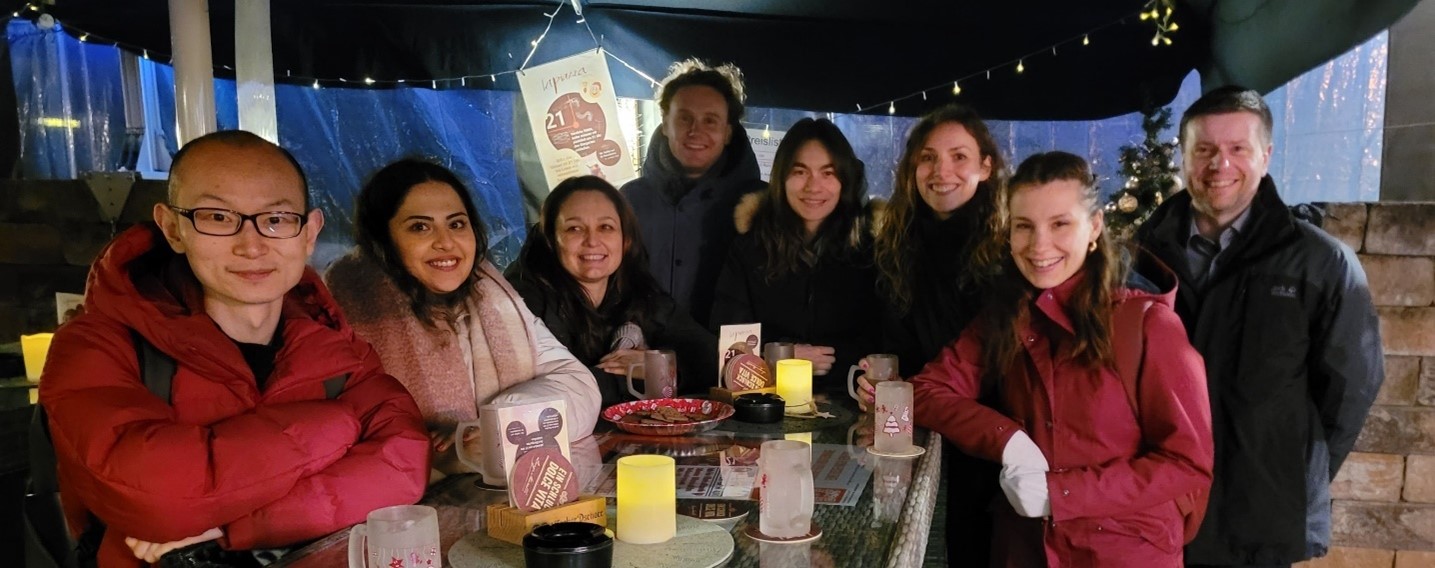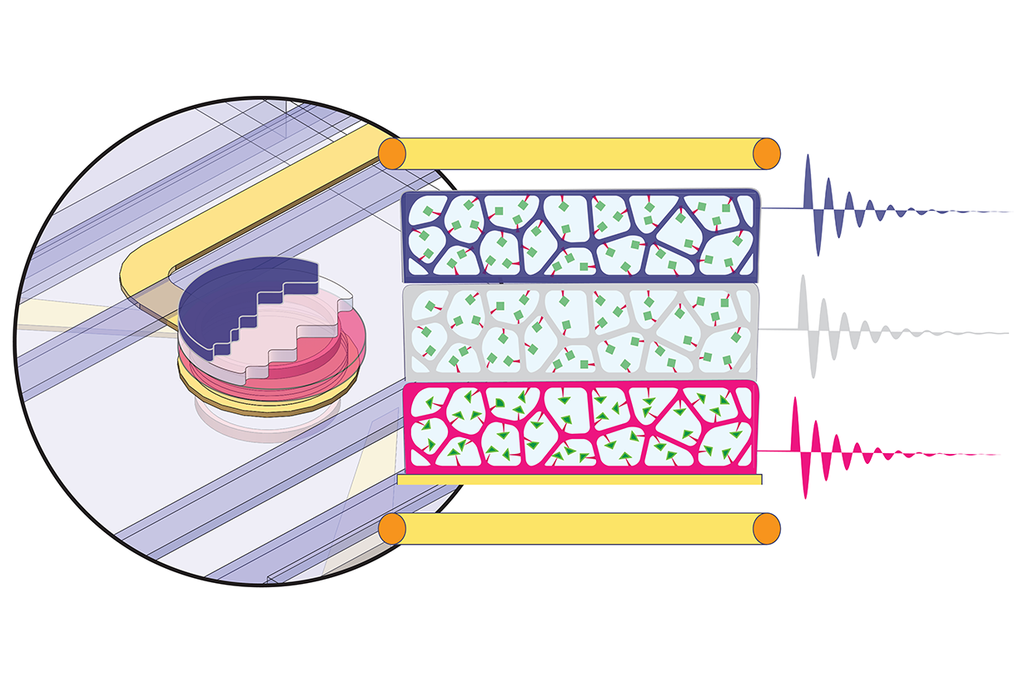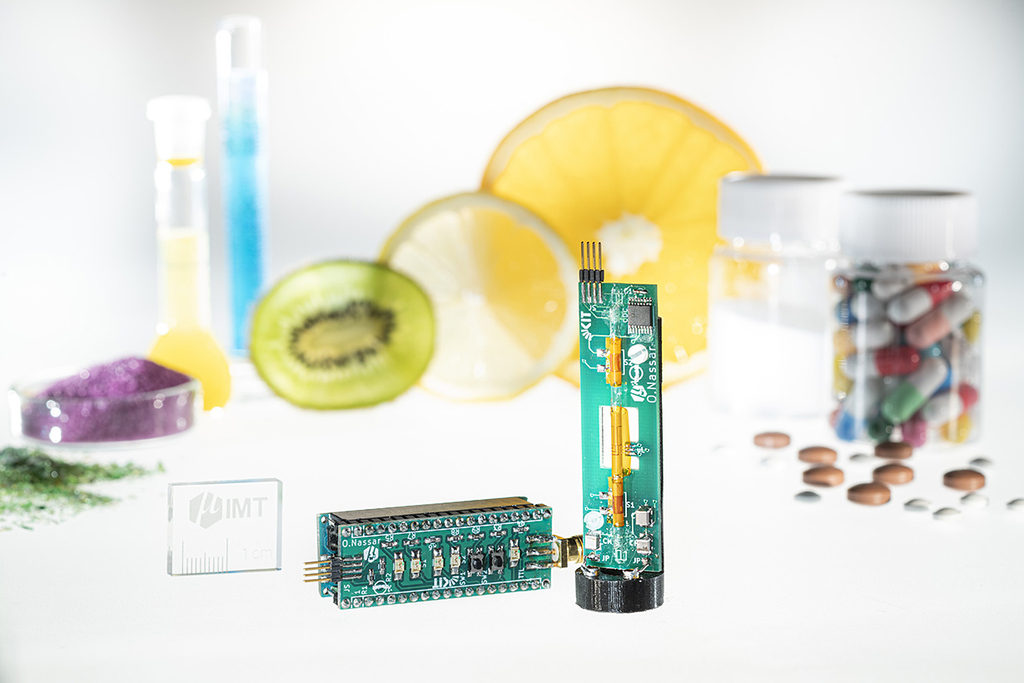NMR Spectroscopy for Metabolomics and Signalling (SMS)
Dr. Neil MacKinnon [Contact]
Is it possible to monitor a native biological process at the molecular level in real-time? The NMR Spectroscopy for Metabolomics and Signaling group at the Institute of Microstructure Technology (IMT), Karlsruhe Institute of Technology (KIT), aims to develop technologies targeting this challenge. The central analytical technique driving these technologies is Nuclear Magnetic Resonance due to its non-invasive and non-destructive treatment of samples.
Our research contributes to the research program 3: "Materials Systems Engineering" (MSE), Topic 5: "Materials Information Discovery", in the research field „Information“ as defined by the Helmholtz Association. Link to MSE website.

Subject areas
Our research focuses on Nuclear Magnetic Resonance spectroscopy (NMR) and imaging (MRI). We explore and take advantage of microfluidic, novel NMR hardware, automation, and hyperpolarization techniques to increase the information extracted from large complex mixture sample sets, targeting active biological systems as the pinnacle of sample complexity. We are necessarily a multi-disciplinary group addressing topics in microstructure engineering, electrical engineering, chemistry, physics, and biology.
Accelerated magnetic resonance
Screening large sample numbers is essential to drawing statistically significant conclusions from complex mixture (e.g. metabolomic) experiments. There is a need to accelerate magnetic resonance (MR) data collection on these sample sets or, alternatively, to maximize the amount of data generated per sample per unit measurement time. Our group advances both MR hardware and methodology to enhance sample throughput. These efforts are linked to the High-Throughput NMR screening platform (HiT-NMR) at IMT.
Magnetic resonance signal enhancement
Enhancing sample throughput often requires smaller sample quantities, sample flow, and combinations thereof. As a result, sensitivity must be addressed to ensure high-quality MR data can be extracted in high-throughput screening contexts. We are currently exploring paramagnetic relaxation enhancement (PRE), para-hydrogen induced polarization (PHIP) and related techniques, and photo-chemically induced dynamic nuclear polarization (photo-CIDNP) as methods for boosting MR signal sensitivity.
In situ biological magnetic resonance
As a non-invasive and non-destructive technique, magnetic resonance offers the opportunity to monitor active biological processes, including the response of these processes to stimuli. Our group explores methods for maintaining natural biological function and stimulus application together with MR methods for extracting the biological responses. We aim to transfer our sample screening and signal enhancement strategies to the study of active biological systems. Our model biological system is Escherichia coli.
With a masters degree from U.N.A.M. Instituto de Química, Gabriel joins the team as a PhD candidate. He will build upon his experience in using spectroscopic methods for determining absolute molecule configuration to explore a novel NMR method for direct measurement of chirality.

In her Masters‘ thesis, Jeanne investigates a method for high throughput metabolomic screening of E. coli cultures.

Nuclear magnetic resonance (NMR) spectroscopy of enzymatic reactions localized within individual hydrogel layers is made possible by a microfluidic device featuring integrated electrodes developed by the Karlsruhe Institute of Technology (KIT). The system enables parallel measurement and development of complex cascaded reactions (Schematic: N. Nordin, IMT).

Automated nuclear magnetic resonance (NMR) spectroscopy of microliter sample volumes under flow conditions is reported by IMT researchers. With the novel NMR probe head, sample throughput can be increased by a factor of 50 opening applications requiring screening of large parameter spaces. (Photo: Markus Breig, KIT).

